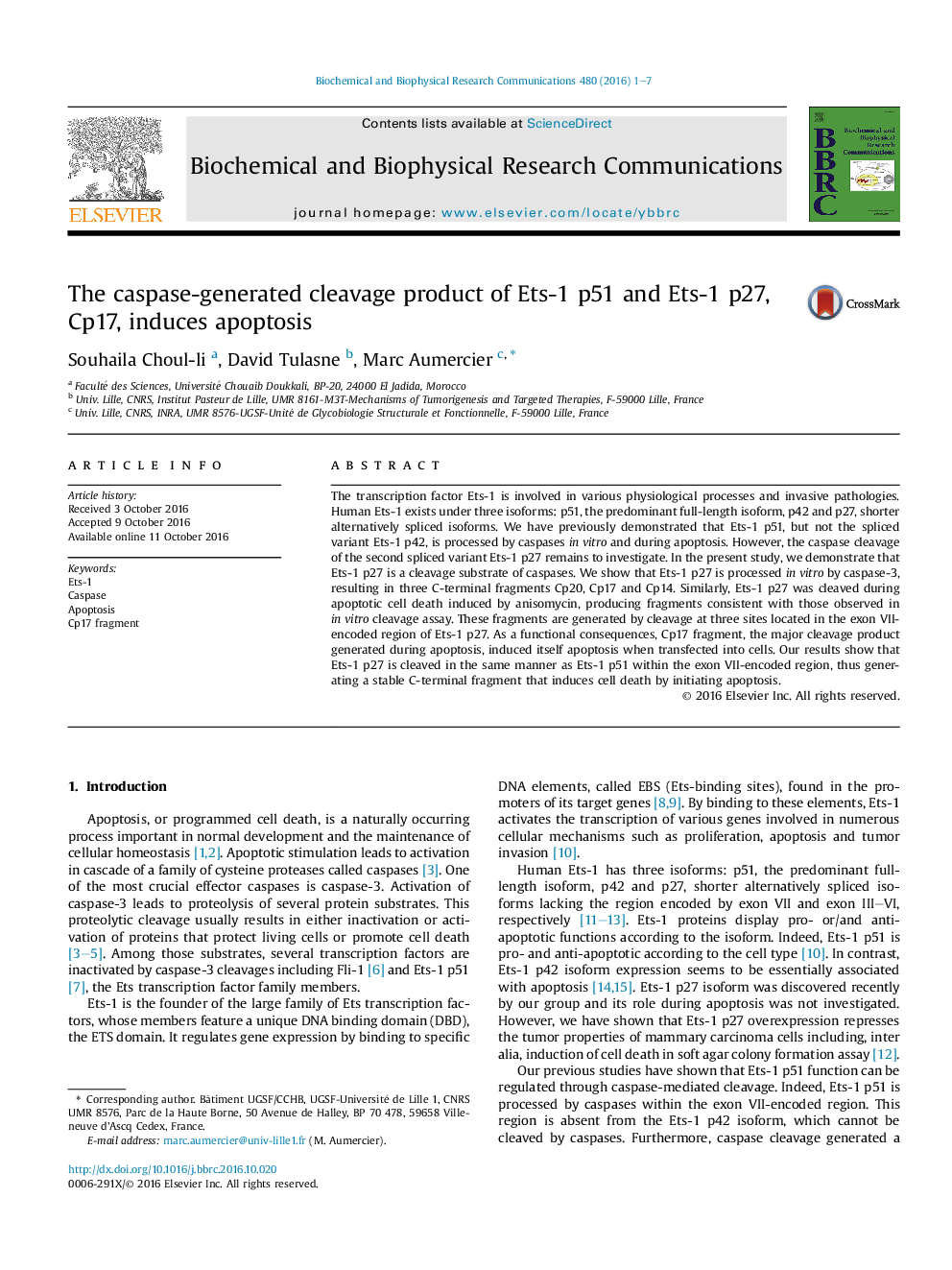| Article ID | Journal | Published Year | Pages | File Type |
|---|---|---|---|---|
| 5506853 | Biochemical and Biophysical Research Communications | 2016 | 7 Pages |
Abstract
The transcription factor Ets-1 is involved in various physiological processes and invasive pathologies. Human Ets-1 exists under three isoforms: p51, the predominant full-length isoform, p42 and p27, shorter alternatively spliced isoforms. We have previously demonstrated that Ets-1 p51, but not the spliced variant Ets-1 p42, is processed by caspases in vitro and during apoptosis. However, the caspase cleavage of the second spliced variant Ets-1 p27 remains to investigate. In the present study, we demonstrate that Ets-1 p27 is a cleavage substrate of caspases. We show that Ets-1 p27 is processed in vitro by caspase-3, resulting in three C-terminal fragments Cp20, Cp17 and Cp14. Similarly, Ets-1 p27 was cleaved during apoptotic cell death induced by anisomycin, producing fragments consistent with those observed in in vitro cleavage assay. These fragments are generated by cleavage at three sites located in the exon VII-encoded region of Ets-1 p27. As a functional consequences, Cp17 fragment, the major cleavage product generated during apoptosis, induced itself apoptosis when transfected into cells. Our results show that Ets-1 p27 is cleaved in the same manner as Ets-1 p51 within the exon VII-encoded region, thus generating a stable C-terminal fragment that induces cell death by initiating apoptosis.
Related Topics
Life Sciences
Biochemistry, Genetics and Molecular Biology
Biochemistry
Authors
Souhaila Choul-li, David Tulasne, Marc Aumercier,
